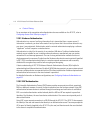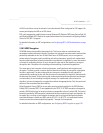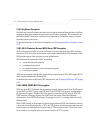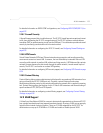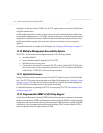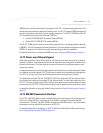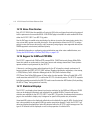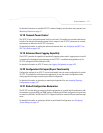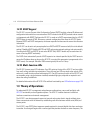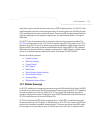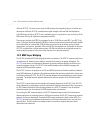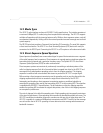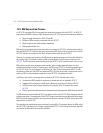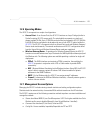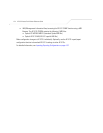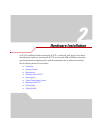
AP-5131 Access Point Product Reference Guide
1-18
1.2.22 DHCP Support
The AP-5131 can use Dynamic Host Configuration Protocol (DHCP) to obtain a leased IP address and
configuration information from a remote server. DHCP is based on the BOOTP protocol and can coexist
or interoperate with BOOTP. Configure the AP-5131 to send out a DHCP request searching for a DHCP/
BOOTP server to acquire HTML, firmware or network configuration files when the AP-5131 boots.
Because BOOTP and DHCP interoperate, whichever responds first becomes the server that allocates
information.
The AP-5131 can be set to only accept replies from DHCP or BOOTP servers or both (this is the default
setting). Disabling DHCP disables BOOTP and DHCP and requires network settings to be set manually.
If running both DHCP and BOOTP, do not select BOOTP Only. BOOTP should only be used when the
server is running BOOTP exclusively.
The DHCP client automatically sends a DHCP request at an interval specified by the DHCP server to
renew the IP address lease as long as the AP-5131 is running (this parameter is programmed at the
DHCP server). For example: Windows 2000 servers typically are set for 3 days.
1.2.23 Multi-Function LEDs
The AP-5131 houses seven LED indicators. Four LEDs exist on the top of the AP-5131 and are visible
from wall, ceiling and table-top orientations. Three of these four LEDs are single color activity LEDs,
and one is a multi-function red and white status LED. Two LEDs exist on the rear of the AP-5131 and
are viewable using a single (customer installed) extended light pipe, adjusted as required to suit
above the ceiling installations.
For detailed information of the AP-5131 LEDs and their functionality, see LED Indicators on page 2-20.
1.3 Theory of Operations
To understand AP-5131 management and performance alternatives, users need familiarity with
AP-5131 functionality and configuration options. The AP-5131 includes features for different
interface connections and network management.
The AP-5131 uses electromagnetic waves to transmit and receive electric signals without wires.
Users communicate with the network by establishing radio links between mobile units (MUs) and
access points.
The AP-5131 uses DSSS (direct sequence spread spectrum) to transmit digital data from one device
to another. A radio signal begins with a carrier signal that provides the base or center frequency. The



